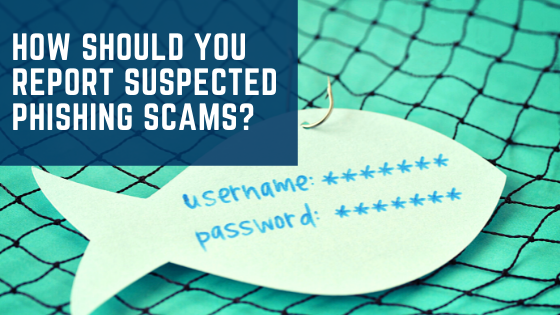Ever gotten an email or text message that was supposedly from a company you knew and had business with but was so poorly written that you started to wonder? Okay, maybe it wasn’t poorly written but started with a generic greeting, like “Dear valued customer,” or the popularly annoying “hi dear” and ended with asking for personal information. This is what phishing scams often look like. While those with outrageous grammatical errors are easy to spot, it’s hard to notice when they lack those errors. However, once you notice them, you should report phishing scams.
How To Recognize Phishing Emails
Here are some telltale signs that the email in your inbox with your bank’s header and logo is not
from your bank.
The content of the message:
Actual companies would never ask you for sensitive information
through your email. This should probably be one of the most obvious signs, but it fails to be
because many people do not know this fact. Instead, legit companies would probably ask you to
contact them or have a meeting in person if they needed sensitive information from you.
Unforgivable grammatical blunders:
You’d think scammers would be smart enough to avoid
making obvious mistakes; you’d be shocked. Many of these emails contain several outrageous
grammatical errors that you wouldn’t even need to recognize as a scam before throwing it in the
trash and blocking the sender.
Generic greetings:
A company that has past business with you or has an account with you will
most definitely know your name and won’t address you as the “valued or dearest customer.”
Random email attachments:
If a legit company or bank wanted you to download something,
chances are they’d send you to their website or only send it if you already requested it. That
email coming out of nowhere along with an attachment is a recipe for disaster, you shouldn’t
open it.
How To Protect Yourself From Phishing Scams
Spam filters may do a fair job of keeping phishing emails that look like spam out of your inbox,
but some manage to escape this filter.
How can you then protect your computer or phone from these smart scammers?
1. Install security software that automatically updates itself to
attack any anomalies effectively.
2. Back up your data periodically. Hence, no matter what happens, you’ll always
have your data safely backed up.
3. Always reach out to your IT team to review any suspicious email before you
respond to it. This way, you can ascertain if it is legitimate or from a scam website.
4. two- or multi-factor authentication is another good way to protect your devices.
How to Report Phishing Scams
If, after putting all the necessary measures in place, a phishing email still finds its way into your
inbox, what do you do? Report it.
How?
“Report phishing scams” sure sounds like a tedious and extremely technical thing to do, but it is,
in fact, not. All it takes is the click of a button that says “report,” after which you forward the email to your IT team and delete it from your inbox.

